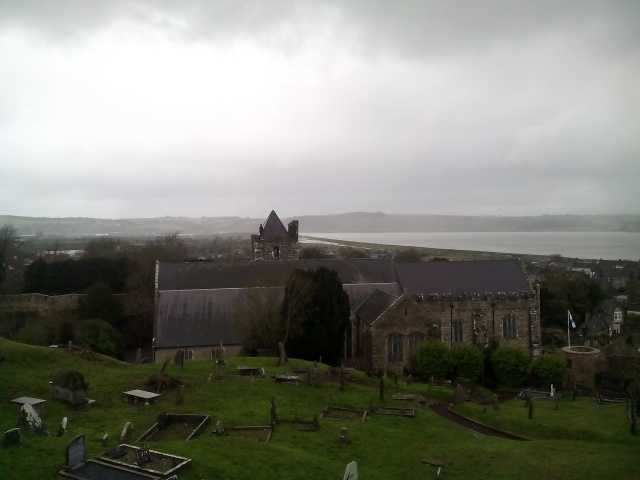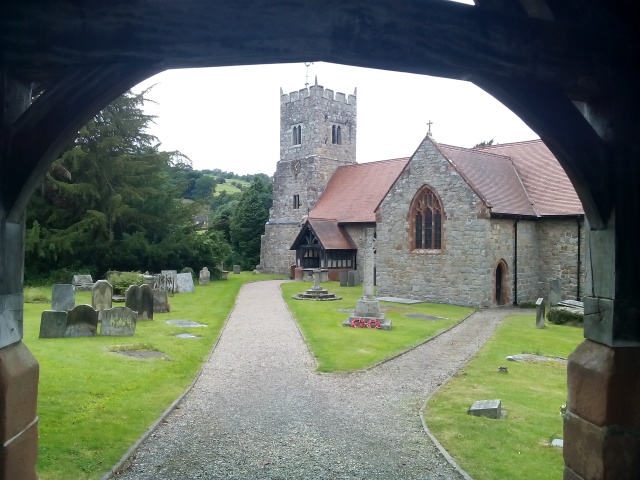The project ‘Meredith Hanmer’, carried out at the University of Sussex, School of English (November 2014-November 2016) received funding from the Marie Curie Actions of the European Union FP7 as a project to reconstruct the life of this familiar yet elusive figure of early modern England.1
An Anglican divine of the Church of England, with subsequent preferment in the Church of Ireland, Meredith Hanmer (c. 1545-1604) is only apparently a lesser figure of Elizabethan England. He lived at a time of religious reform, ecclesiastical experiment, and debate of fundamental theological questions; he was one of the few English Protestant ministers to arrive in Ireland in the 1590s and witnessed the Nine Years War as a chaplain in the army; Hanmer made a substantial contribution to the Protestant religious identities inaugurated by the Reformation in England through his rich track record as a translator, polemicist, converter, and antiquarian.

The research project charted archives in England and Ireland to retrieve, collect and assess information on Hanmer’s origins, education and preferment. The support of the EU made it possible to travel to several archives and follow Hanmer’s itineraries from native North Shropshire to Oxford, London, Dublin and Southern Ireland to Cork and Youghal. A re-examination of the early sources of Hanmer’s life has suggested that his date of birth ought to be reconsidered. Research at The National Archives has brought some further light to the contradictory information handed down regarding his preferment in Ireland.
Although Hanmer has been treated in a piecemeal manner, his name dots histories of the book, of literature, of the church and religion.2 Some scholars have significantly highlighted his importance and connections in early modern circles.3 Furthermore, his appearance in the Dictionary of National Biography and in the Dictionary of Irish Biography foregrounds his relevance across national boundaries. For such an apparently marginal figure, Hanmer was strangely everywhere, and this alleged marginality is in fact what makes him such an interesting gateway into the Elizabethan world.

His published works were all engaged with key aspects of the Reformation: The Auncient Ecclesiasticall Histories was a monumental enterprise and a major resource for Protestants, which provided the first English translation of early Church fathers (1577); two refutation of the Jesuits made him emerge as an early vociferous advocator of English Protestantism in the London of the 1580s (The Great Bragge and Challenge of M. Champion and The Iesuites Banner, 1581); the sermon preached at St Katherine by the Tower in 1586, A Sermon on the Baptising of a Turk, was a pioneering elaboration of Muslim-Protestant conversions.
A critical contribution to Hanmer’s legacy was made by the 17th c. antiquary and historian James Ware who printed Hanmer’s Chronicle of Ireland alongside Edmund Spenser and Edmund Campion in his collection The Historie of Ireland. The publication of Hanmer’s Chronicle was apparently an illustrious collaborative enterprise too, between an antiquary of high standing like James Ware, and no less than the Archbishop of Armagh James Ussher (1581-1656), and the Bishop of St Asaph John Hanmer (1574-1629), nephew to our Hanmer.4
A particularly compelling aspect emerged in the way Hanmer complicates our idea of post-Reformation England and Ireland as places of spiritual division. Hanmer makes an extremely complex and rich case as a man who moved across geo-political and social contexts and had a varied history of encounters and debates with prominent Jesuits.5 In the process of reconstructing his life and bringing back together Hanmer’s many facets, we are confronted with the story of the ambitious abusive clergyman and the one of the serious scholar of unprecedented intellectual achievements.

Hanmer was the second son of a family of Pentrepant in the parish of Selattyn, North Shropshire. The family line was continued by his older brother David, the father of the future Bishop of St Asaph. The Shropshire Archives store an impressive amount of deeds and indentures which make clear that the buying, renting and selling of land in th area was the family business for generations.6 Hanmer studied at Shrewsbury School in the wake of the arrival of Thomas Ashton, the enlightened headmaster responsible for the flourishing of the grammar school that in the 1560s was attracting pupils from neighbouring counties. Philip Sidney and Fulke Greville were also taught there in the 1560s. Hanmer studied at Oxford and gained fame as a controversialist in London in the 1580s. In the early 1590s he moved to Ireland, where we find him amongst an illustrious circle of colonists, clergymen, and soldiers. His Irish career gravitated at different stages to Munster and it enables us to look at the linkages between the different social and professional groups inhabiting 16th century Ireland: the clergy, the undertakers of Lord Burghley’s campaign for resumption, and royal officials like the Norreys brothers.
The comparatively rich evidence that survives allows us to examine Hanmer as a representative of the Elizabethan clergy in the very different contexts of England and Ireland; to learn more of the relationship of the clergy with the establishment, with religion and with other social and professional groups. A study of this complex figure opens a possible new perspective on the age by throwing light on under-explored clergy, their linkages, careers, and lives.
The research has been carried out in archives in Dublin National Library of Ireland, Trinity College Library (Dublin), National Archives of Ireland (Dublin), Representative Church Body Library (Dublin), and England The National Archives (Kew), Corpus Christi College archives (Oxford), Bodleian Library (Oxford), Chatsworth House (Bakewell), Oswestry Library Local Studies Collection (Oswestry), Shropshire Archives (Shrewsbury), Lambeth palace Library, London Metropolitan Archives, British Library (London). The research included work with administrative records; legal deeds; indentures; records of the Exchequer; Muniment books; Act books and visitation registers; parish registers; State Papers; personal papers; wills, funeral and testamentary records; diaries and historical notes. The rich material in terms of literary, cultural, political and social significance has required a multidisciplinary approach, which was nurtured and supported superbly by the scholars, fellows and students of the Centre for Early Modern and Medieval Studies and by the academic community of the Schools of English and History at the University of Sussex.
This blog post was written by Dr Angela Andreani, Marie Curie Intra-European Research Fellow in English at Sussex University, and originally appeared on the Centre for Early Modern and Medieval Studies (Sussex University) blog. As her two year project investigating the “life and adventures” of Meredith Hanmer comes to a close, she shares some of the highlights of her research with us.
1 The research leading to these results has received funding from the People Programme (Marie Curie Actions) of the European Union’s Seventh Framework Programme (FP7/2007-2013) under REA grant agreement n° [PIEF-GA-2012-327060].
2 Hanmer has a place in the history of the Religious Controversies of the Elizabethan Age by Peter Milward (London, 1978); in the Oxford History of the Irish Book edited by Raymond Gillespie and Andrew Hadfield (Oxford, 1997); he features regularly in studies on British scholarship, religion and identity (James Ussher: Theology, History, and Politics in Early Modern Ireland and England, Oxford, Oxford University Press, 2007; F.J. Levy, Tudor Historical Thought, SanMarino CA, 1967; Hilary Larkin, The Making of Englishmen, Leiden / Boston, 2014).
3 Dimmock, Matthew and Andrew Hadfield. “Meredith Hanmer and Edmund Spenser.” Notes&Queries vol. 59, no. 4, 2011, pp. 523-524; Hadfield, Andrew, Edmund Spenser: A Life, Oxford, Oxford University Press, 2012; Ford, Alan. The Protestant Reformation in Ireland 1590-1640, Four Courts Press, 1997.
4 A letter from Dr John Hanmer to the Archbishop of Armagh dated at Pentre Pant, May 28, 1627, printed in Charles Richard Elrington, The Whole Works of the Most Reverend James Ussher, D.D., Dublin, 1864.
5 From the influential refutation of Edmund Campion’s Letter to the Privy Council, to the brief encounter with the Jesuit missionary Henry Fitzsimon in Dublin’s Castle, and the posthumous publication of his historical view of Ireland side by side with Campion’s.
6 I gratefully acknowledge the staff of the Shropshire Record Office (SRO) in Shrewsbury for their assistance.
